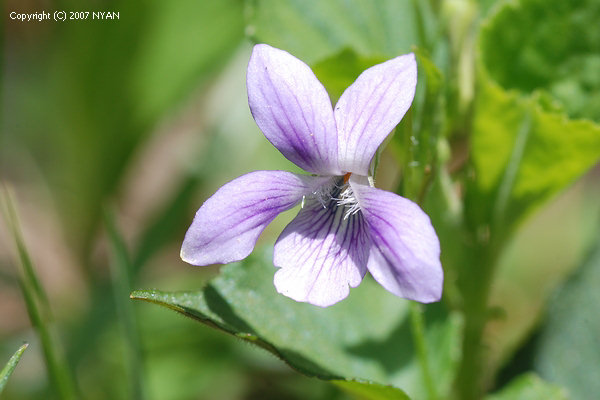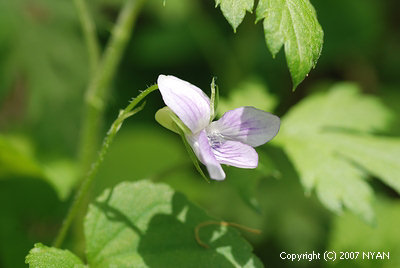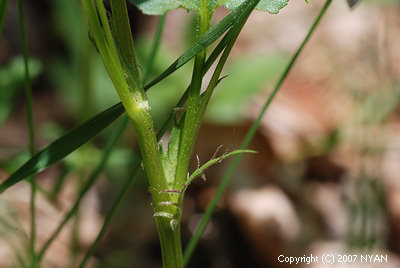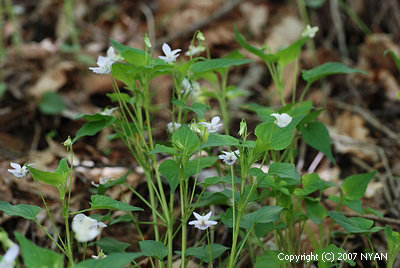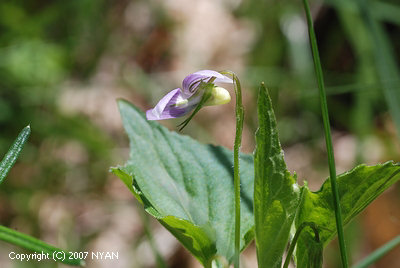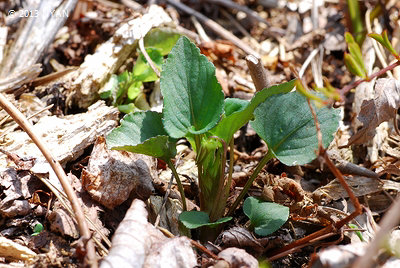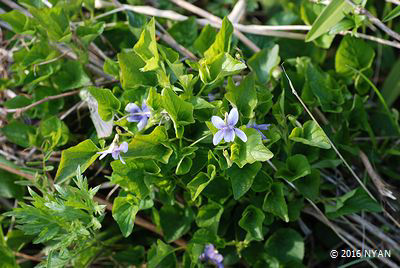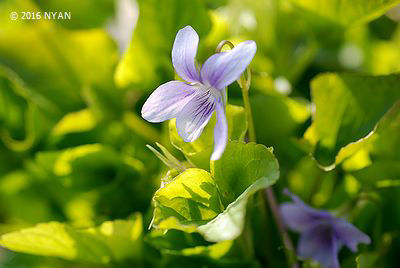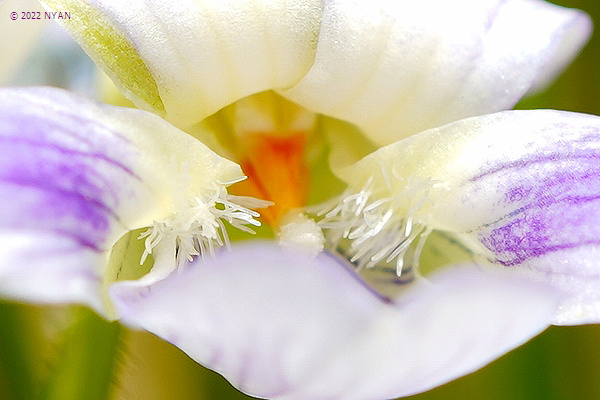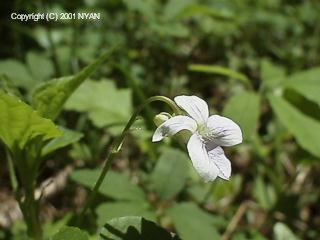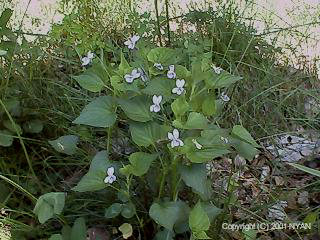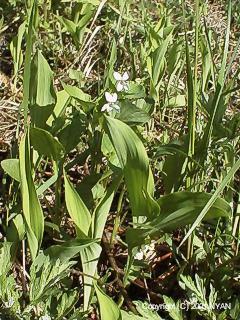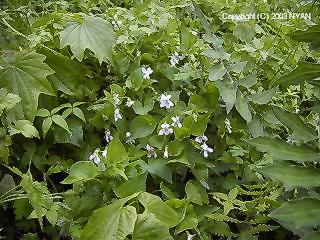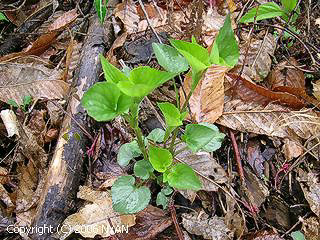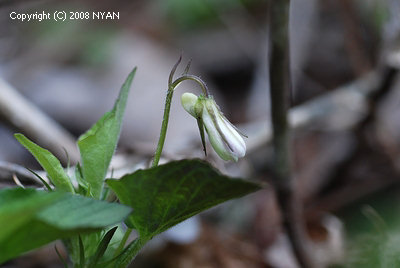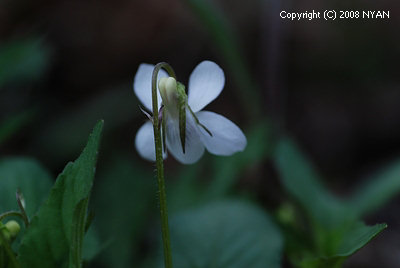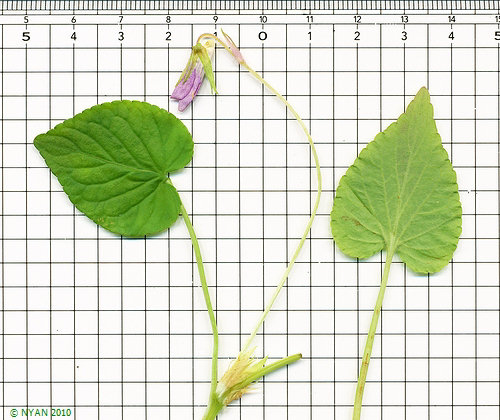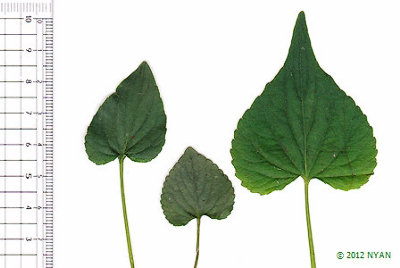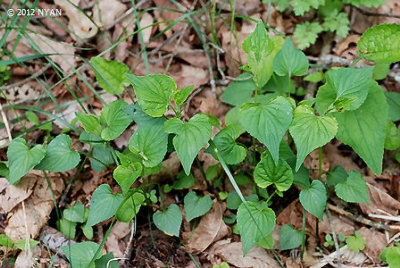| Section | Trigonocarpae Gordon | |
|---|---|---|
| Scientific Name | Type species | Viola acuminata Ledebour : {Ezono Tachitubo Sumire} Published in: Fl. Ross. 1: 252. (1842) |
| Variety | Viola acuminata var. pilifera C. J. Wang | |
| Form |
Viola acuminata f. alba Moriya : {Sirobana Ezono Tachitubo Sumire}
Viola acuminata f. glaberrima (H.Hara) Kitam. : {Kenasi Ezono Tachitubo Sumire} Published in: Acta Phytotax. Geobot. 20: 196. (1962)
|
|
| Synonym |
Viola micrantha Turcz.
Viola laciniosa A. Gray
Viola acuminata var. glaberrima H.Hara Published in: J. Jap. Bot.,12: 220. (1936)
There are many other records |
|
| Origin | acuminata : Acute, sharp | |
| Common names | 【Chinese】鸡腿堇菜, 【English】Long-stem violet | |
| Stalk Form | A flower scape is extended from a stalk, and a flower blooms from each scape. | |
| Habitat | Mostly in cold regions. Crowding in bright plateau forests and grasslands. | |
| Distribution | Japan domestic | Hokkaido whole area. In the Honshu island, it is distributed in high mountain, and segregatively distributed over Izu Peninsula and Mt. Ibuki. |
| Japan overseas | Siberia, East Asia, Sakhalin, Chishima. | |
| Others | ||
| Flower | Shape | Middle size. White bristles at the base of the flathead. |
| Color | From white to light purple. A purple article enters into the labial palp. | |
| Spur | Often white, round and short. There is a peach-cracking streak in the center of the flower. | |
| Season | Late (May-June). | |
| Stigma | It is rod-shaped and has a slightly bulging tip. Generally, fleshy hairs are seen. It has the same characteristics as Viola sacchalinensis. |
|
| Aromatic | ||
| Others | The flowers are small compared to the size of the whole plant. The calyx is elongated. | |
| Leaf | Shape | Hart form. The foliage is 2 to 5 cm, and the base is a shallow heart shape. |
| Color | Both sides are green. | |
| Others | The root leaves are round, and the leaves above the stem leaves are large and pointed. | |
| Seed | Shape | Small, oval. The fruits are oblong. |
| Color | ||
| Others | ||
| Characteristics of roots | Light brown and densely grown. | |
| Endangered Information | Akita:ThreatenedⅠ, Yamagata:ThreatenedⅠ, Miyagi:Near Threatened, Niigata:population, Okayama:Near Threatened, | |
| Type Specimen | Altai, Baikal, Dauria. | |
| Chromosome Number | 2n=20 (Probatova, N. S. & A. P. Sokolovskaya. 1983. Chromosome Numbers in Adoxaceae, Chloranthaceae, Cupressaceae, Juncaceae, Poaceae.) |
|
| Reference Information | ||
| Others | ||

